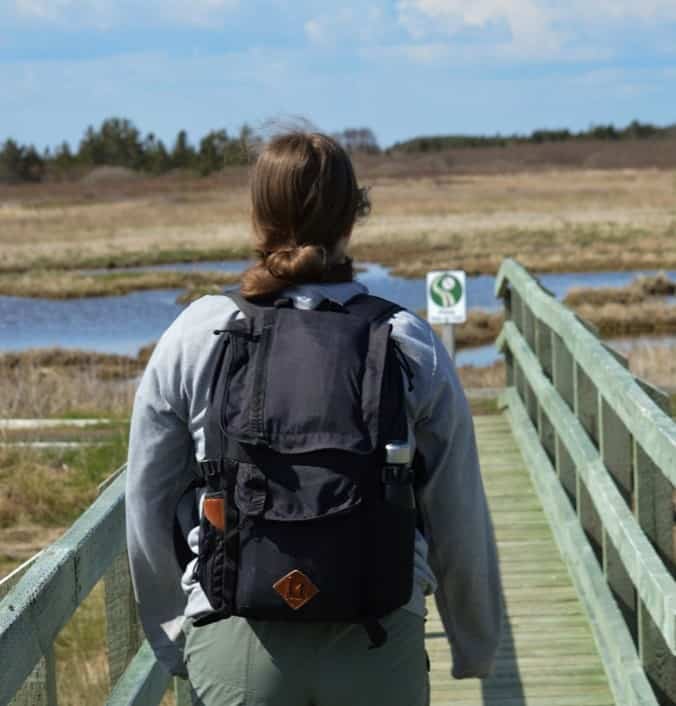
In the westernmost part of the province on the southern end of the North Mountain ridge, there is a small island approximately 7.5 kilometres long and 2.5 kilometres wide. This island, known as Brier Island, is often referred to as Nova Scotia’s “hidden gem” as it is rich in biodiversity and is home to numerous rare and endangered species. Located at the tip of Digby Neck beyond Long Island, Brier Island has a unique, cool, maritime island ecosystem and is an important stopover point for migrating sea birds. Due to its ecological importance, Brier Island is a popular study site of plant and animal researchers, including some of our own from the K.C. Irving Environmental Science Centre. Read on to find out what our researchers are studying on this special island.
The Monitoring Efforts of the Eastern Mountain Avens from Staff at the E.C. Smith Herbarium
Brier Island is one of only two places on Earth where Eastern Mountain Avens (Geum peckii) can be found. These herbaceous perennials that belong to the rose family are found only in the White Mountains of New Hampshire, U.S.A., and the Brier Island area of Nova Scotia, Canada. Eastern Mountain Avens are one of the most globally rare plants due to habitat degradation and loss. Most Eastern Mountain Avens on Brier Island grow in coastal peatlands with sparse trees and shrubs. While peatland and bog habitats are beginning to receive more protection due to their ecological importance, historically, many peatlands were excavated and drained for agriculture or development. Furthermore, Eastern Mountain Avens are slow to mature, further limiting their ability to regenerate after habitat disturbance.
Staff at the K.C. Irving Environmental Science Centre have been helping with the monitoring of Eastern Mountain Avens for nearly ten years by studying the plants’ ecology. Past ditching of the wetland in the Big Meadow Bog on Brier Island- the site of the largest occurrence of Eastern Mountain Avens- resulted in a highly altered ecosystem which significantly impacted the survival of this rare flowering species. Several years ago, the bog’s ditches were plugged in an attempt to restore the wetland’s natural hydrology. The K.C. Irving Environmental Science Centre’s staff, including Alain Belliveau, Collections Manager for the E.C. Smith Herbarium, and Alissa Creaser, a summer research assistant, have been contributing to recent monitoring efforts on Brier Island. Alain and other K.C. Irving Centre staff have brought back Eastern Mountain Avens seeds from Brier Island to conduct seed germination trials to test their viability in a laboratory setting. Due to the sensitive ecosystem on Brier Island, permits must always be obtained to conduct scientific research.
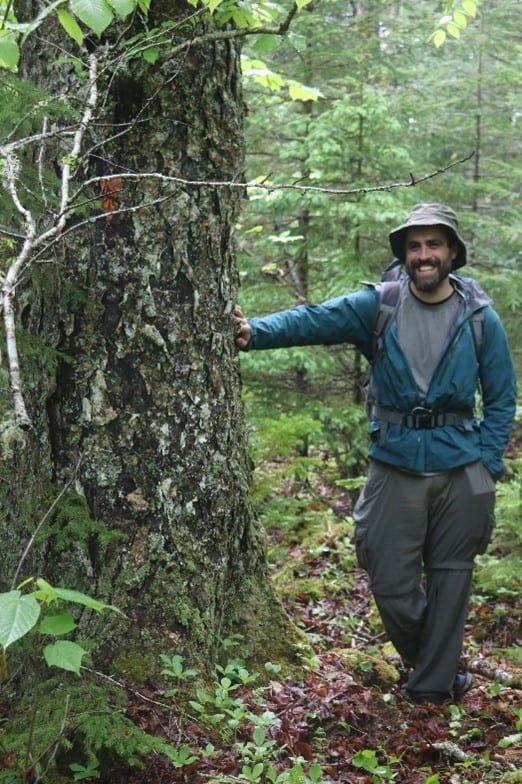
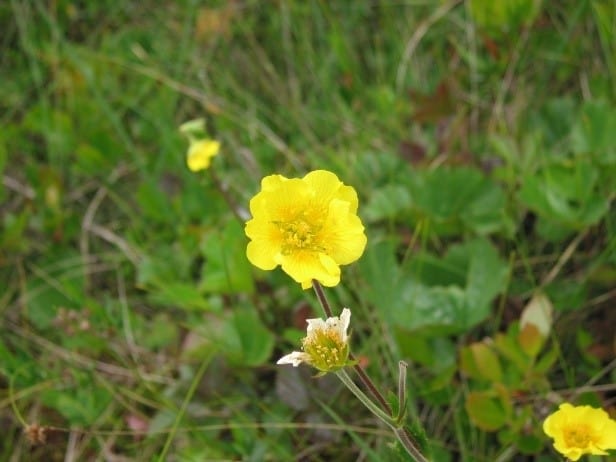
Our understanding of the ecology of species at risk of extinction is critical for their and our long-term survival. In the case of Eastern Mountain Avens, studying its ecology and monitoring its population helps us understand the impacts of wetland alterations, interactions with species that thrive in altered habitat, its reaction to climate change, and the next steps for conservation.
Alain Belliveau, Collections Manager, E.C. Smith Herbarium
The Effects of Herring Gulls & Wetland Restoration on Mercury Concentrations in Big Meadow Bog: Dr. Nelson O’Driscoll’s Mercury Lab
Asides from rare plants, Brier Island is also home to numerous migratory bird species, including the Herring Gull (Larus argentatus). Big Meadow Bog on Brier Island hosts 4000-6000 Herring Gulls. In fact, there are so many Herring Gulls that they have begun to impact the bog habitat of Brier Island. Dr. Nelson O’Driscoll in Earth and Environmental Science has studied mercury movements on Brier Island for over a decade. Dr. O’Driscoll and his students from the K.C. Irving Environmental Science Centre’s Mercury Lab have found that bird biomass and waste products are nutrient levels and likely increasing methylmercury (MeHg) availability in surface water and the lower levels of the food web in Big Meadow Bog, Brier Island. Their research shows higher concentrations of methylmercury and other potentially toxic elements in Big Meadow Bog surficial groundwater in areas with the highest gull density. Since mercury is a toxic contaminant that accumulates in food webs and affects the health of wildlife and habitat, it is important to understand how mercury moves through different ecosystems with landscape changes. A new area of research for contaminant movement is the concept of “biovectors” or transport by organisms.
Gulls are a significant biovector on Brier Island. The herring gull (Larus smithsoniansus) colony at Brier Island is one of the largest in Atlantic Canada, in many years exceeding 2500 pairs of birds. These birds feed in the ocean, at mink farms, at aquaculture sites, and at fish processing plants, where they consume foods that generate nutrient-rich guano. Because marine food webs tend to have elevated mercury, especially in prey like predatory fish, herring gulls also ingest relatively high amounts of mercury. After feeding the birds fly back to their colonies and defecate in areas near their nesting sites, delivering excess nutrients and contaminants to Brier Island soils.
Results from gull guano analysis from Brier Island have shown that guano is very high in water soluble orthophosphate (PO43-), or in other words, phosphorus that is easily available to algae and plants. Work by Hayley Geizer in Dr. O’Driscoll’s lab estimates that 1191 kg of water-soluble PO43- are deposited annually into Big Meadow Bog from Herring Gull guano. This significant annual addition of dissolved PO43- are taken up by photosynthetic organisms at the base of the marine food web, like plants or phytoplankton, and are likely impacting plant ecology in the area. The Mercury Lab has also found annual seasonal trends in methylmercury (MeHg) and phosphorus (P) concentrations in the Big Meadow Bog following the bog restoration project, which increased the water table levels. Ongoing monitoring on Brier Island continues with invertebrates to assess changes in mercury bioaccumulation patterns.
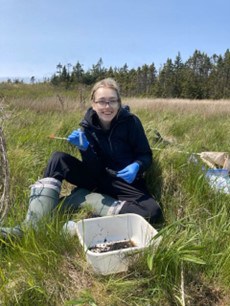
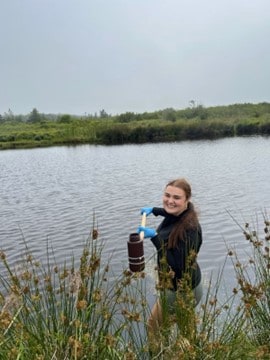
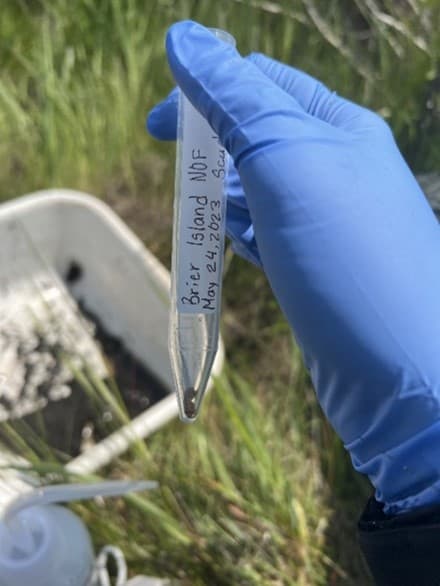
Our work in Big Meadow Bog on Brier Island is a significant contribution to the understanding of mercury movements in human-impacted ecosystems. There are few long-term studies of this type, and this is a fascinating site for research into the future.
Dr. Nelson O’Driscoll, Professor in Earth and Environmental Science
Contribute to research and conservation work on Brier Island by supporting the Big Meadow Bog Boardwalk Project!
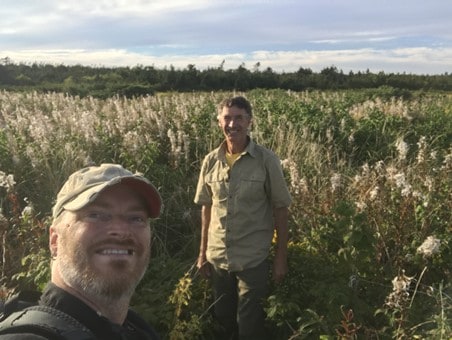
The Brier Island Trails Committee have entered phase three of their accessible boardwalk building project in Big Meadow Bog on Brier Island. For a $250 donation, one meter of boardwalk will be built. The Big Meadow Bog boardwalk supports accessible environmental education, scientific research, and helps protect this unique and rare ecosystem. Donate today at https://nstrails.com/donate-now/ and click “Brier Island Trails Committee” in the drop-down menu.
[Photo: Dr. Nelson O’Driscoll with Dr. Nick Hill in Big Meadow Bog, Brier Island, prior to the restoration, 2018].


 Acadia University
Acadia University